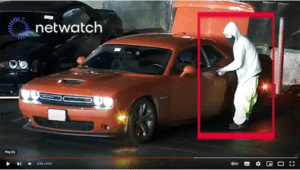And in this Corner: PVM vs. Video Verification:
Over the past two years, businesses have been forced into increasing their reliance on video surveillance. Why do you ask? Video has become the prime data source to drive increased security and more operational insights that help leaders adapt to the post-pandemic world.
Video has typically been reactive, used mainly to investigate a crime after the fact. But more impactful solutions are available that can stop crime before it starts. Proactive video monitoring, or PVM, is one of these emerging offerings. PVM focuses on preventing crimes, whereas traditional video surveillance is reactive and can only help solve crimes. PVM draws immediate attention to unauthorized activity, allowing the video monitoring provider to intervene and notify local authorities before a crime has a chance to occur. Beyond that, PVM offers live intervention, not pre-recorded messages.
Of course, Netwatch believes PVM is the best way to modernize video monitoring. While video verification services may have been a solid option in the past, PVM is a more than worthy successor. Here are a few reasons why:
Don’t React, Prevent
While video verification was adequate as an answer to the problem of the false alarms bogging down call centers, it’s still a reactionary measure. A monitoring professional will immediately check the video and call to confirm an intrusion when a camera is triggered. If an unwanted intrusion is verified, the monitoring center will quickly call the police to report a robbery in progress. Video verification is used to confirm that a crime occurred, eliminating the possibility of a false alarm but not preventing loss or activity.
PVM empowers security personnel to focus on high-impact activities while an AI-based engine “watches” for potential security events. PVM is proven to be highly effective at stopping criminal activity by monitoring, engaging in live intervention, and reporting. Built-in intelligence automatically detects threats and sends a real-time alert to an intervention specialist. The operator investigates the area of concern and, if necessary, can speak directly to an intruder through a live audio warning. In 98 percent of cases, a live audio warning (not a pre-recorded message) is enough to stop the individual’s actions.
Let’s Shake
There has been a lot of discussion about how solutions like PVM can replace the human guard element, but that is not the case. With more than one million security guards employed in the United States, according to the U.S. Department of Labor’s Bureau of Labor Statistics, these individuals are critical to ensuring the safety of a wide variety of locations and environments.
Video verification can help guards identify what alarms are real and what is false, but beyond that it cannot help a guard drive informed response or prevent security breaches. Rather, it leaves an on-site guard in a position to wait for police to arrive and that could lead to a larger, more complex security situation over time.
PVM augments on-site security staff by increasing their ability to see, hear and “sniff out” danger. Hazardous activities — such as responding to a dangerous situation — can now be managed by PVM. This approach significantly reduces liability and ensures the continued safety of guards on-site.
Additionally, PVM can help during staffing shortages and oversee monitoring in remote, desolate, or dangerous locations where some may not want to be posted. It can also support less than desirable jobs, such as working the graveyard shift, where perimeter rounds are completed several times each hour. PVM takes away the monotonous, sometimes risky work and leaves the more strategic duties to your security guards.
Stronger KPIs
After a crime or other incident has occurred, it is essential to generate a detailed incident report to document the event. Incident reports are a key feature and a necessary step in the PVM process.
PVM also provides comprehensive reports to provide insights on trends or emerging risks. With advanced algorithms, it can help leaders determine how many events occur in one facility area rather than another. It can learn where the most high-risk facilities are due to the frequency of alerts. Reports may prove to be very valuable in many ways, including providing evidence in a trial, info for police follow-up, support for insurance policy requirements and claims, and compliance updates for audits.
Video verification doesn’t provide this level of reporting and trending, leave your on-site security team to manually pick up the pieces.
The Winner is ….
So who wins this battle? As shown above, PVM can provide integrators with a way to truly differentiate themselves in the market, increase RMR, stay ahead of industry trends, and meet the growing demand for intelligent video monitoring. It’s time to get familiar with what’s ahead.



